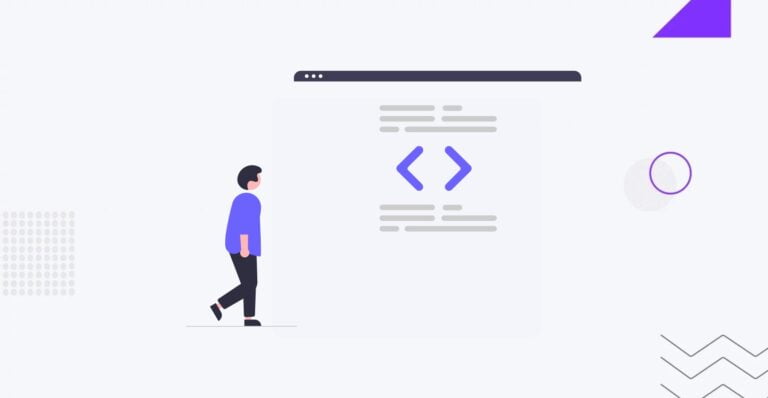How to Create an E-Learning Website and Overcome Challenges
Table of Contents

E-learning has seen explosive growth in recent years, and it’s not hard to see why. With the increasing availability of high-speed internet and mobile devices, more and more people are turning to online learning to acquire new skills and knowledge. However, developing an e-learning website can be challenging, with various technical and logistical issues that must be addressed. You may ask, “How to create an e-learning website?” In this blog post, we’ll take a closer look at some of the challenges developers face when creating e-learning websites and explore possible solutions to these issues.
Advantages of e-learning for school & college education
When seeking a more convenient and uncomplicated approach to educating your children or students, e-learning websites can be a valuable resource. In modern times, many students prefer e-learning platforms over traditional classroom-based education because they provide all the necessary materials and resources they require right at their fingertips. These platforms serve as an online space, where teachers and students can interact and share educational resources.
For educators, e-learning platforms offer the opportunity to spend less time preparing teaching materials and more time engaging with students. The virtual classroom created by these platforms allows teachers to answer student questions, monitor their progress, and provide feedback. Additionally, e-learning platforms can be utilized to assess students’ comprehension skills, track their academic performancePerformanceRefers to how fast a website or web application loads and responds to user interactions.
More About Performance over time, and evaluate their understanding of a topic.
Challenges in creating an e-learning website
While there are many benefits to creating an e-learning website, it is essential to be aware of the challenges that come with it.
One of the primary challenges is technical expertise. Developing an e-learning website requires web development, learning management systems, and multimedia integration knowledge. Building a robust and user-friendly platform can be easy with the necessary skills and resources.
Another challenge is content creation and management. E-learning websites require high-quality content in various formats, such as videos, interactive quizzes, and downloadable resources. Creating and organizing this content can be time-consuming and overwhelming, especially if you need a clear strategy.
Additionally, marketing and promoting your e-learning website can be a significant challenge. With increasing online learning platforms, standing out from the competition can take time and effort. You must develop a strong marketing strategy and leverage various channels to reach your target audience effectively.
When you encounter challenges in web development, having a seasoned team to rely on can make all the difference. At IT Monks, we possess the expertise to tackle web designWeb DesignCreating and organizing the visual layout, user interface, and overall aesthetics of a website.
More About Web Design tasks of any level of intricacy. We are pleased to assist you in launching a visually stunning and technologically sound website. Get in touch with us to talk about the specifics of your e-learning project.
Need help with designing and maintaining your e-learning website?
How to overcome technical challenges
To overcome the technical challenges in e-learning website developmentWebsite DevelopmentCreating and constructing a website from scratch.
More About Website Development, having a clear plan and access to the right resources is important. Here are a few steps you can follow:
- Define your requirements. Start by outlining the key features and functionalities you want your e-learning website to have. This will help you determine the technical skills and tools you need to acquire or outsource.
- Choose the right technology. Research and select the appropriate technology stack for your e-learning website. Consider factors such as scalability, security, and user experience. Content management systems like WordPressWordPressOpen-source content management system (CMS) that allows users to create and manage websites and blogs.
More About WordPress or learning management systems like Moodle can help get started. - Hire or acquire the necessary expertise. If you need more technical skills, consider hiring a web developer or partnering with a development agency specializing in e-learning platforms. Alternatively, you can invest time in learning the necessary skills through online courses or tutorials.
- Test and iterate. Regularly test your e-learning website during development to identify and fix any technical issues. Continuously iterate and improve the user experience based on user feedback.
Design tips for e-learning websites
The user interface (UI) of your e-learning website plays a crucial role in engaging learners and facilitating effective learning. Here are some tips for designing an engaging UI:
- Keep it simple and intuitive. Ensure that the UI is user-friendly, with clear navigation and intuitive design. Avoid clutter and excessive visual elements that may distract learners from the content.
- Use multimedia elements. To enhance engagement, incorporate multimedia elements such as images, videos, and interactive elements. Visuals help explain complex concepts and make the learning experience more interactive and enjoyable.
- Ensure responsiveness. Optimize your e-learning website for devices like desktops, laptops, tablets, and smartphones. A responsive designResponsive DesignA design technique that allows a website to adapt and respond to the screen size and device on which it is being viewed.
More About Responsive Design ensures learners can access the content seamlessly across various devices. - Provide progress tracking. Implement a progress-tracking feature that allows learners to monitor their progress and achievements. This provides a sense of accomplishment and motivates them to continue learning.
Content creation and e-learning website management
Content creation and management are crucial aspects of building a successful e-learning website. Here are some tips to help you streamline this process:
- Develop a content strategy. Define your target audience, learning objectives, and desired outcomes. Create a content plan that aligns with these goals and covers various topics and formats.
- Leverage different content formats. Offer a variety of content formats to cater to different learning preferences. This can include video lessons, interactive quizzes, downloadable resources, and discussion forums.
- Ensure quality control. Regularly review and update your content to ensure accuracy and relevance. Implement a review process to eliminate any errors or outdated information. Engage subject matter experts to contribute to the content creation process.
- Organize content effectively. Use a logical and intuitive structure to organize your content. Divide it into modules or lessons, and provide clear navigation to help learners easily locate and access the necessary information.
Implement effective LMS features
A learning management system (LMS) is a software applicationApplicationA software program designed to perform specific functions or tasks on electronic devices, such as smartphones and tablets, computers, and smart TVs.
More About Application that helps manage and deliver online courses and educational content. Here are some essential LMS features to consider:
- Course management. An LMS should allow you to create and organize courses efficiently. It should provide features such as course calendars, progress tracking, and enrollment management.
- Assessment and feedback. Incorporate features that allow learners to take quizzes, complete assignments, and receive feedback. This promotes active learning and helps assess learners’ progress.
- Discussion and collaboration. Provide a platform for learners to engage in discussions, ask questions, and collaborate with their peers. This fosters a sense of community and encourages knowledge sharing.
- Analytics and reporting. Implement analytics and reporting features to track learners’ progress, identify areas for improvement, and generate insights on-course performance.
Monetization strategies for e-learning websites
Monetizing your e-learning website is an important consideration, whether you are an individual educator or a company offering training programs. Here are some common monetization strategies:
- Course fees. Charge learners a fee to access your courses. Offer different pricing tiers or subscription models to cater to different budgets and learning needs.
- Membership or subscription model. Create a membership or subscription-based model where learners pay a recurring fee to access a library of courses or premium content. This provides a steady stream of revenue and encourages learner loyalty.
- Affiliate marketing. Partner with relevant companies or platforms and promote their products or services to your learners. Earn a commission for each sale or referral made through your e-learning website.
- Sponsorships and partnerships. Collaborate with companies or organizations that align with your e-learning website’s mission and values. Offer sponsorship opportunities or develop joint ventures to generate additional revenue.
- B2B partnerships. If you target corporate clients, explore partnerships with businesses that benefit from your e-learning programs. Offer customized training solutions or white-label your courses for their employees.
By diversifying your monetization strategies and exploring different revenue streams, you can maximize the financial potential of your e-learning website.
The future of e-learning platforms
The education landscape is rapidly evolving, and e-learning websites are taking center stage in this transformation. By providing interactive and captivating learning experiences in conjunction with easily accessible content and digital tools, these platforms are redefining how we learn and stay informed on the latest developments across the globe.
Furthermore, e-learning websites are becoming more user-friendly, encouraging students of all ages to engage with the material more meaningfully. For instance, some platforms now offer interactive lessons, personalized feedback from instructors, gamification elements, virtual courses, and comprehensive courses tailored to specific educational objectives.
How to create an e-learning website worry-free? Overcoming the major challenges is easier with professional help. At IT Monks, we provide many services to help you accomplish your web design tasks. Fill in a quick form below, and let’s discuss your project!




